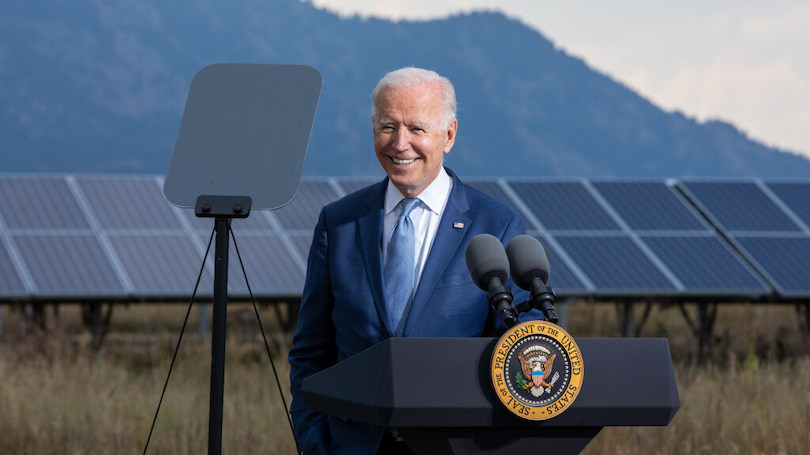Federal Dollars Continue to Power Clean Energy Evolution
Nov. 16, 2023

It’s been just two years since the ink from President Biden’s pen dried on the Bipartisan Infrastructure Law (BIL), and the Administration has already announced nearly $400 billion in public infrastructure and clean energy investments, with 40,000 infrastructure projects moving forward. For programs supported by the Joint Office of Energy and Transportation (Joint Office), communities across the nation are already tapping into nearly $6.6 billion in funding available to accelerate a convenient, reliable, affordable, accessible, and equitable electrified transportation future, moving the nation closer to its clean energy future.
Established under BIL, this anniversary marks a significant milestone for the Joint Office, which is spearheading transformative investments across the nation. The Joint Office is focused on improving our transportation infrastructure while ensuring people can ride and drive electric across the country. As the Joint Office continues to accelerate the nation’s shift to a transportation system powered by clean electricity, these historic federal investments are drastically cutting emissions and combating climate change through Joint Office-supported programs and outreach. Executive Director of the Joint Office Gabe Klein looks forward to continued efforts supported by the law, saying in part, “The Joint Office is supporting an $18 billion dollar investment in clean transportation through the Bipartisan Infrastructure Law. We need to use this once in a lifetime opportunity to ensure that we are creating infrastructure designed to serve our communities today and create a livable future tomorrow and for generations to come.”
BIL is modernizing the electrical grid, accelerating clean energy generation, and elevating domestic battery materials processing and component manufacturing to strengthen America’s energy independence, as well as providing the largest federal investment to date in electric vehicle (EV) charging. In just two years, $2.4 billion has been made available from the $5 billion National Electric Vehicle Infrastructure Program (NEVI), with an additional $700 million in competitive grants from the $2.5 billion Charging and Fueling Infrastructure Discretionary Grant Program (CFI) and an additional $100M in competitive grants to repair and replace existing but non-operational EV chargers. Both the NEVI and CFI programs are part of the Justice40 Initiative which ensures 40% of the benefits from certain Federal investments positively impact marginalized communities. All 50 states, D.C., and Puerto Rico have submitted and updated thoughtful plans outlining how this infrastructure will be deployed every 50 miles along designated alternative fuel corridors and how the benefits will flow to disadvantaged communities. The momentum for NEVI program is building. Already, eight states have issued conditional awards for new NEVI stations amounting to $119 million, two states have agreements in place, and 17 states are soliciting proposals for new stations. The first NEVI-funded station openings are imminent, building confidence that across the nation there will be access to convenient, reliable fast charging. From the Joint Office, $51 million has been made available to enhance EV charging resiliency, improve EV charging performance and reliability and support workforce development for EV charging, continuing progress on EVITP training driven by federal minimum EV charging standards.
But America’s transportation revolution is more than supporting single-user electric vehicles. The law has also granted $5.6 billion—with $2.3 billion awarded—for the Low or No Emission Vehicle Program to provide funding to state and local governmental authorities for the purchase or lease of zero-emission and low-emission transit buses, as well as acquisition, construction, and leasing of required supporting facilities. Additionally, $5 billion—with $965 million awarded to nearly 400 school districts—has been made available over the next five years for the Clean School Bus Program to replace existing school buses with zero-emission and low-emission models, improving the health and safety of millions of children who ride them each day. The Joint Office is proud to provide technical assistance for these programs to ensure everyone has access to a clean ride.
It’s all part of the biggest change to our transportation system in a century and the Joint Office looks forward to i continuing to advance clean energy objectives established by BIL.
Learn about other investments made through the Bipartisan Infrastructure Law in its first two years of deployment.
